Key takeaways:
- A pre-production timeline acts as a roadmap for filmmakers, outlining essential tasks and milestones to streamline the process.
- Effective pre-production planning minimizes unforeseen challenges, ensuring a smoother filming experience and fostering team collaboration.
- Key components include a strong script, careful casting, and effective location scouting, which can elevate the overall project.
- Utilizing digital tools like Trello, Google Drive, and Gantt charts enhances organization and clarity throughout the production timeline.
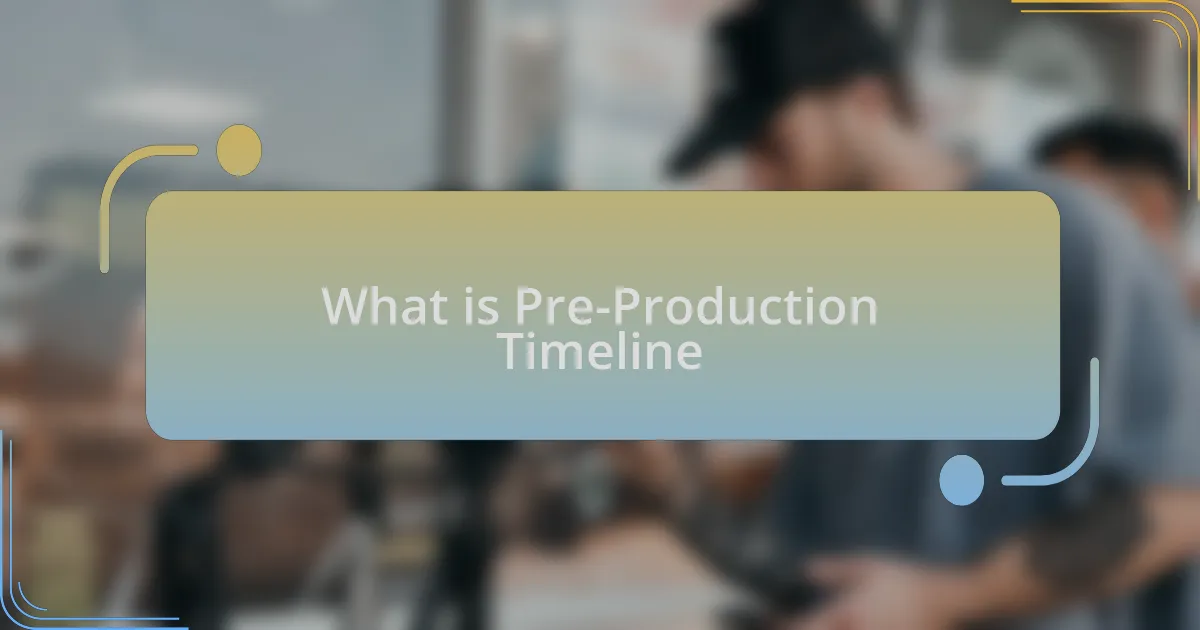
What is Pre-Production Timeline
A pre-production timeline is essentially a roadmap for filmmakers, outlining all the essential tasks and milestones that need to be accomplished before shooting begins. From casting actors to securing locations, this timeline helps ensure that the entire project runs smoothly, reducing stress as the shoot date approaches. I remember feeling overwhelmed during my first production, and having a clear timeline laid out made all the difference in managing my time and resources effectively.
Think of the pre-production timeline as a detailed checklist; it keeps everyone on the same page and aligned with the project’s vision. I once spent hours figuring out schedules, and let me tell you, it was not a fun experience. But once I embraced this timeline approach, everything from script revisions to budgeting became more manageable, and I could focus on the creative aspects rather than the logistics.
In my experience, a well-structured pre-production timeline does more than just outline tasks; it creates a sense of anticipation and excitement among the crew and cast. Have you ever noticed how a well-prepared team can transform the atmosphere on set? When everyone knows their responsibilities and deadlines, it fosters collaboration and energy that can elevate the entire filming experience.
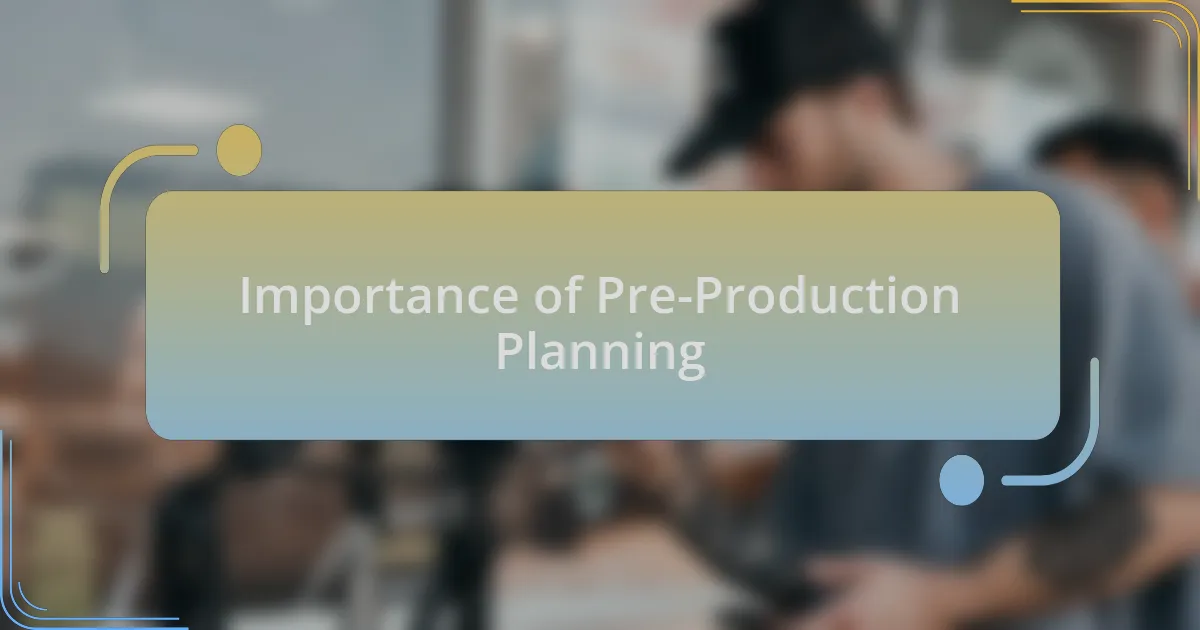
Importance of Pre-Production Planning
A well-thought-out pre-production plan is crucial because it sets the tone for the entire filmmaking process. I recall a time when I jumped into shooting without a solid plan, and the chaos that ensued taught me a valuable lesson: preparation is paramount. Each detail, from scheduling to permits, can make or break a project, so having clear guidance in place eases the path to success.
Moreover, effective pre-production planning helps prevent unforeseen challenges that can derail the production. I’ve experienced the dread of last-minute changes—like a location falling through right before filming. By investing time in pre-production, I have significantly reduced those stressful surprises, creating a smoother and more enjoyable shooting experience.
On a personal note, pre-production isn’t just about logistics; it’s also an opportunity to dream big. I often find that, while drafting my timeline, I become invigorated by the potential of the project. When I visualize the entire process, from concept to capture, it fuels my creative drive and helps me build a motivated team eager to bring that vision to life. Isn’t it inspiring to think how careful planning can transform an idea into an incredible film?

Key Components of Pre-Production
When I think about key components of pre-production, the script always comes to mind first. A well-crafted script serves as the backbone of the entire project. I’ve found that when the narrative is strong, every other element naturally falls into place. Remember the first time I collaborated with a screenwriter? The clear vision we developed made all the difference in how we approached casting and location scouting. Isn’t it fascinating how a good story ignites enthusiasm in the team?
Casting is another critical piece I can’t overlook. This process is not just about finding actors who can deliver lines; it’s about assembling a team that truly embodies the characters and emotions I want to convey. I once spent weeks auditioning countless talented actors, and each one brought a unique interpretation to the roles. Those moments of discovery are truly exhilarating, but they also remind me of how essential it is to capture the right chemistry before we engage in the filming.
Lastly, I always emphasize the importance of location scouting. Securing the ideal backdrop can elevate a film from mediocre to memorable. One time, while exploring potential filming sites, I stumbled upon a hidden gem that perfectly matched my vision; the atmosphere practically whispered to me the stories waiting to unfold. This experience highlighted how the right location not only enhances storytelling but also inspires the crew. Isn’t it incredible how the setting can shape the entire mood of a film?
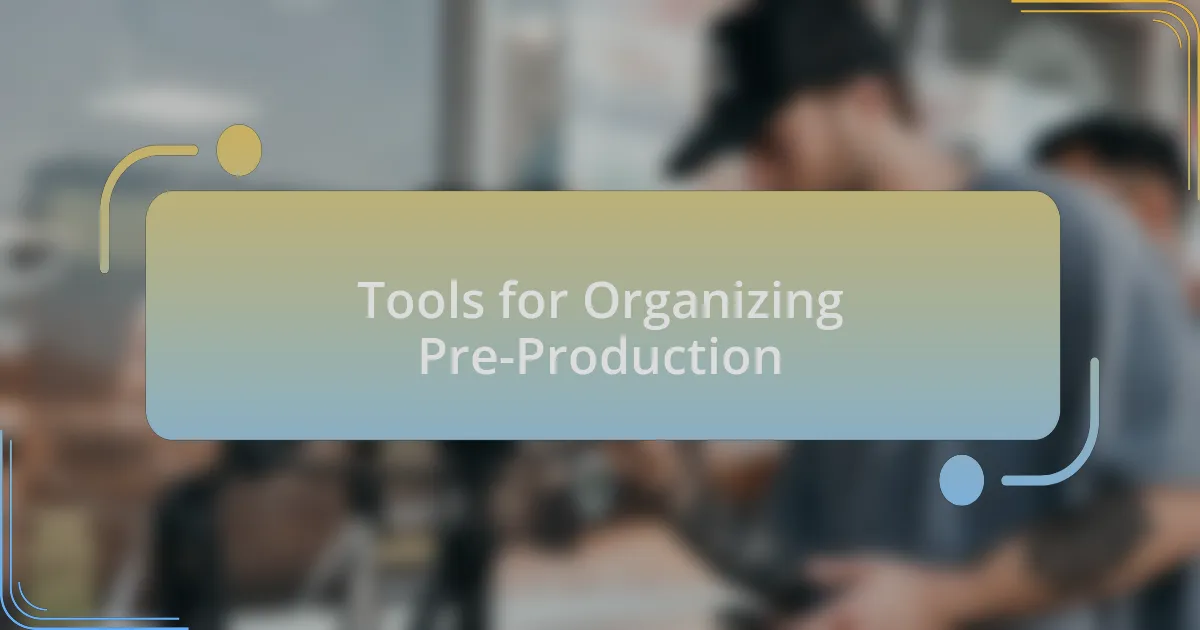
Tools for Organizing Pre-Production
When it comes to organizing my pre-production timeline, I heavily rely on digital tools. Applications like Trello and Asana have been game-changers for me. They allow me to create intuitive boards where I can visualize tasks, assign responsibilities, and track progress. Have you ever felt overwhelmed by a long to-do list? These tools break it down into manageable sections, which helps keep anxiety at bay.
Another essential tool on my list is Google Drive. Its collaborative features enable seamless document sharing and real-time editing. I remember a time when my crew and I were piecing together shot lists late at night. With Google Drive, we could all contribute in real time, bouncing ideas off each other as if we were sitting around a table. Isn’t it amazing how technology unites creative minds, even from a distance?
Finally, I can’t forget about Gantt charts. These visual timelines have been invaluable in laying out my project’s milestones. The first time I created one, I felt an incredible sense of clarity—not just for myself but for the entire team. It laid out a roadmap for where we needed to be at every stage. Ever felt that satisfying click when everything finally aligns? That’s how Gantt charts make me feel, turning chaos into order.
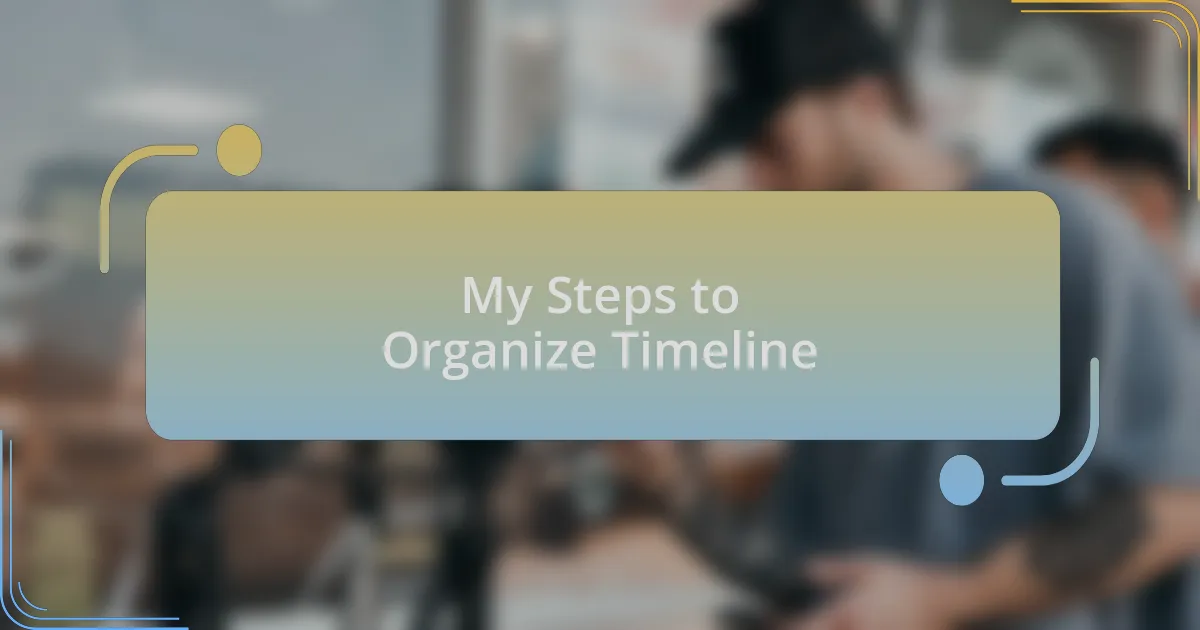
My Steps to Organize Timeline
To kick off my timeline organization, I always start by breaking down the project into phases. I use a color-coding system to differentiate between pre-production, production, and post-production tasks. It’s like creating a visual map of my thoughts—have you ever experienced that rush of clarity when you finally sort out all the ideas swirling in your mind? That’s what organizing by phases does for me; it transforms chaos into structure.
Next, I set clear deadlines for each task, often relying on a countdown to keep my team motivated. I’ve found that adding a bit of urgency can spark excitement. During one project, we had a tight deadline, and I put little markers on our shared digital calendar. Those countdowns became fuel for our creativity; it was thrilling to see how much we accomplished under pressure. Seeing the finish line brought the team closer together, don’t you think?
Lastly, I hold regular check-ins with my crew to discuss progress and address any roadblocks. I’ve learned that open communication can shine a light on issues before they grow. I vividly remember a time when a team member shared a concern about a location we had chosen; discussing it together led to a crucial pivot in our planning. I always ask, what challenges do you see ahead? This question nurtures an environment of collaboration, ensuring we’re all aligned and ready to tackle anything that comes our way.
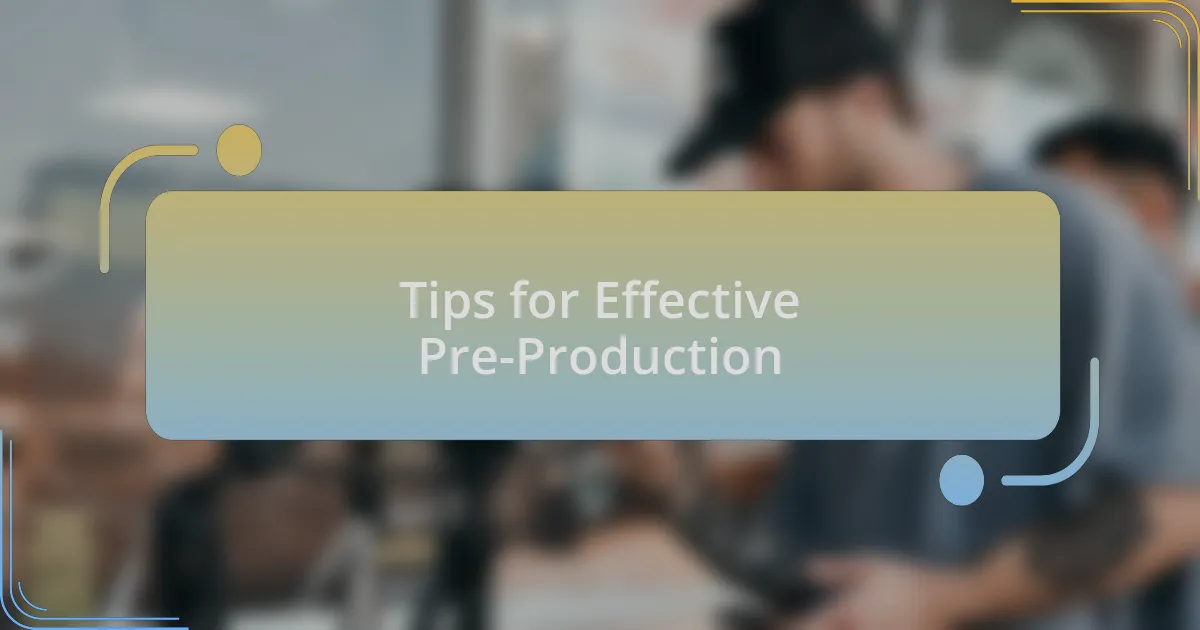
Tips for Effective Pre-Production
When it comes to effective pre-production, one of my go-to strategies is creating a detailed shot list. This might sound basic, but having every scene outlined simplifies the whole filming process for me. I remember a project where I thought I could wing it without a list. The chaos was palpable, and we missed several crucial shots. Have you ever felt that sinking feeling when you realize something vital is overlooked? A well-crafted shot list serves as a roadmap, ensuring that nothing slips through the cracks.
Another tip I’ve embraced is assembling a trusted team well in advance. I’ve often found that the most successful projects stem from strong relationships built early on. For instance, in one of my earlier films, I chose crew members who not only had the skills but shared a similar passion for the story we were telling. This created a bond that fueled our creativity and collaboration. Don’t underestimate the power of having a crew that feels more like family; it makes a world of difference when challenges arise.
Lastly, I prioritize securing all necessary permits and clearances before diving into production. I once learned this lesson the hard way when we were forced to halt a shoot because we lacked the required permissions for a location. The frustration was immense. Can you imagine the lost time and wasted resources? By taking the time to address legalities upfront, I find I can focus more on the creative aspects when production kicks off, alleviating future stress and uncertainty.